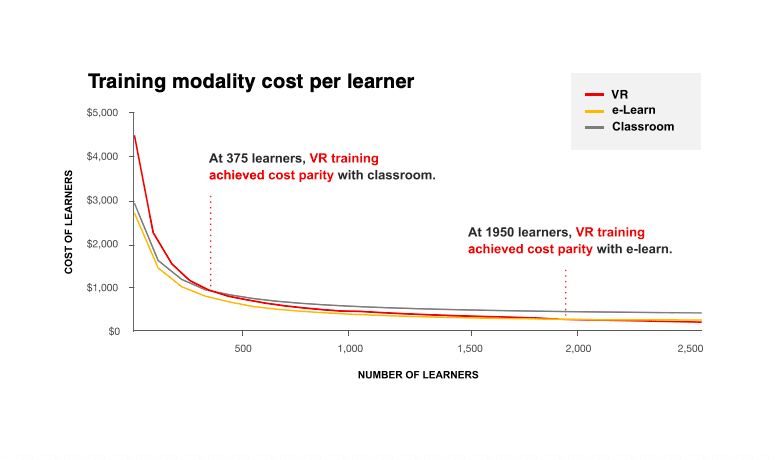A common misconception regarding virtual reality (VR) training for businesses is that it’s too expensive to generate a positive return on investment (ROI). The truth is that — while VR training does have somewhat higher upfront costs than traditional methods — the relatively low ongoing costs often make it an excellent investment.
Therefore, the real question is whether VR provides enough value for your specific business to make it worth that upfront expense. By examining the costs and benefits, you can determine whether implementing VR training is advantageous for your company.
Use Cases for VR Training
First, it’s important to consider how and why businesses use VR training. A 2023 survey of UK-based learning and development professionals found that 23% of respondents noticed higher knowledge retention with VR training, while 30% noted improved engagement levels. Nearly half of respondents said VR training is of higher quality than classroom or e-learning methods.
VR has become quite popular for recruiting and onboarding purposes, as candidates and new hires can gain meaningful experience by simulating the tasks they’ll perform for your business. If they make any mistakes, you can simply restart the VR module instead of implementing costly fixes to your real-life assets.
VR training is also valuable for ongoing training and employee development. In addition to safely simulating physical tasks — such as those in medical fields or hazardous environments, like construction or manufacturing — you can use VR to help employees develop soft skills.
For example, you could use VR to simulate discrimination scenarios while conducting a diversity, equity, and inclusion (DEI) training course. Or, set up a VR module to train employees’ leadership skills when developing them for management positions.
No matter how you use it, an advantage of VR training is the availability of data analysis. VR modules often track usage statistics, performance data, and engagement levels, allowing you to optimize your program once training is underway.
Upfront Costs: VR vs. Traditional Methods
Of course, the big upfront cost of VR training is the headsets themselves. That said, you might be surprised by how affordable VR headsets can be these days. For instance, you can now purchase the popular Meta Quest 2 All-In-One VR Headset for less than £200 each.










